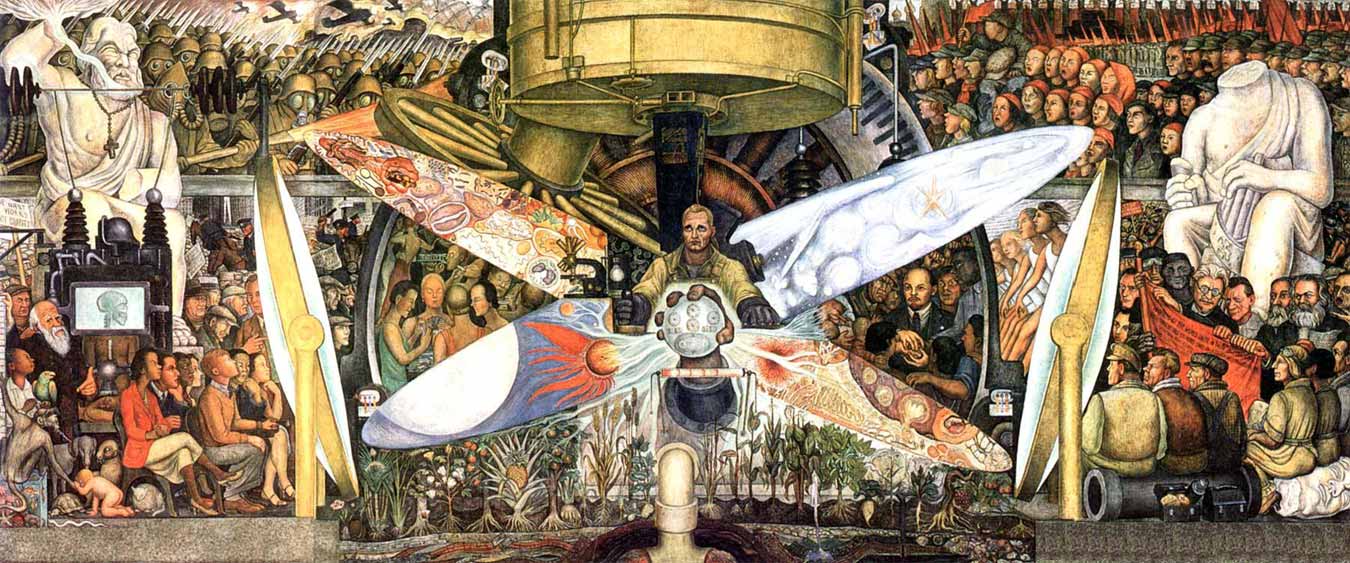
Art for the People
The Mexican Mural Movement starts with Marxist and radical painters in Mexico City, most famously Diego Rivera, though other notables included David Alfaro Siquieros and Jose Clemente Orozco. The murals usually have political or social themes, and eventually the tradition spreads far beyond Mexico to Chicano communities and other Latin American countries.
"The noble work of our race, down to its most insignificant spiritual and physical expressions, is native (and essentially Indian) in origin. With their admirable and extraordinary talent to create beauty, peculiar to themselves, the art of the Mexican people is the most wholesome spiritual expression in the world and this tradition is our greatest treasure. Great because it belongs collectively to the people and this is why our fundamental aesthetic goal must be to socialize artistic expression and wipe out bourgeois individualism.
We repudiate so-called easel painting and every kind of art favored by ultra-intellectual circles, because it is aristocratic, and we praise monumental art in all its forms, because it is public property.
We proclaim that at this time of social change from a decrepit order to a new one, the creators of beauty
must use their best efforts to produce ideological works of art for the people; art must no longer be the
expression of individual satisfaction which it is today, but should aim to become a fighting, educative art
for all." - 1922's "Declaration of Social, Political, and Aesthetic Principles" by the Syndicate of Technical Workers, Painters and Sculptors